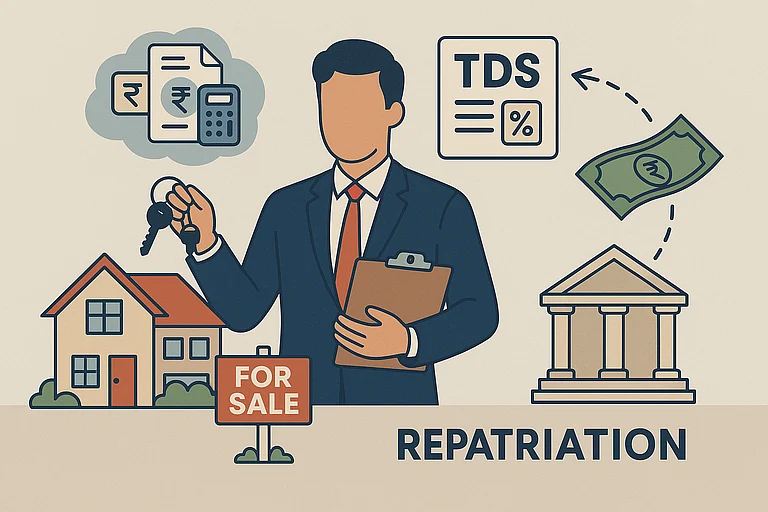For Non-Resident Indians (NRIs), earning worldwide but remaining financially connected to India raises one big question: "Will they be taxed twice?" This is where the Double Taxation Avoidance Agreement or DTAA comes in, relieving the NRIs from tax implications on the same income being charged in two countries. However, how does it work, what type of income is covered, and under which sections of the Income-tax Act of 1961 is it governed? Let's dig into it.
What is DTAA?
DTAA is a treaty between two countries that tries to avoid double taxation of the same income. India has DTAA with over 80 countries, including the US, UK, UAE, Singapore, and Canada. The purpose of these treaties is that the NRIs need not pay double taxes on their worldwide income if that income is taxable in India as well as in their resident country.
How Does DTAA Work?
DTAA ensures income is either taxed only once or at a reduced rate. The agreement provides relief in two ways:
1. Tax Credit: If you've paid taxes in your resident country, you can claim that amount as a credit in India.
2. Tax Exemption: Certain incomes, like business profits or interest, may be taxed in just one country.
For instance, salaries earned in the UAE are tax-exempt in India under India's DTAA with the UAE. Likewise, dividends received from Indian companies by a resident of the US are taxed at a reduced rate of 15 per cent under their treaty.
What Types of Income Are Capped?
DTAA usually covers the following types of income:
1. Salary: Income from employment in the resident country is usually tax-exempt in India.
2. Interest Income: NRIs can take advantage of lower TDS rates on interest from NRO accounts or Indian bonds.
3. Dividends: Dividend taxes may be capped under DTAA, typically at between 5 per cent and 15 per cent rates.
4. Capital Gains: Provisions vary widely, but most treaties exclude capital gains on shares or securities.
5. Business Income: Business income might be liable to tax only in one country.
6. Pensions: Some treaties specifically state whether pensions are subject to taxation in India or the resident country.
Parts of the Income-tax Act that Form the DTAA
Several parts of the Income-tax Act, 1961, provide the statutory provisions for DTAA:
1. Section 90: Deals with DTAAs concluded with countries with which India has executed agreements.
2. Section 91: Grants unilateral relief for income earned in countries with which India does not have a DTAA.
3. Section 195: Deals with the deduction of tax at source for payments to NRIs, with DTAA provisions overriding domestic rates.
How to Claim DTAA Benefits
Here’s a step-by-step guide to claiming DTAA benefits:
1. Obtain a Tax Residency Certificate (TRC): This proves you’re a tax resident of a foreign country
2. Submit Form 10F: Provide details of the treaty and the income for which you’re claiming relief
3. File Indian Taxes: Ensure proper reporting of your global income and taxes paid abroad
4. PAN Requirement: A valid PAN is required to avail of DTAA benefits
Common Mistakes to Avoid
Misreporting Income: Failure to report income in either country can result in penalties
Ignoring TDS Rates: Understand the tax rates applicable under DTAA to avoid excess TDS deductions in India
Neglecting Tax Residency Rules: Your residency status determines where your income is taxable
DTAA isn’t just a tax-saving tool—it’s a financial safeguard for NRIs earning globally. By leveraging these treaties and understanding the provisions under India’s Income-tax Act, NRIs can optimize their tax liabilities while ensuring compliance. With the right approach, managing taxes across borders becomes a lot simpler and more efficient.















